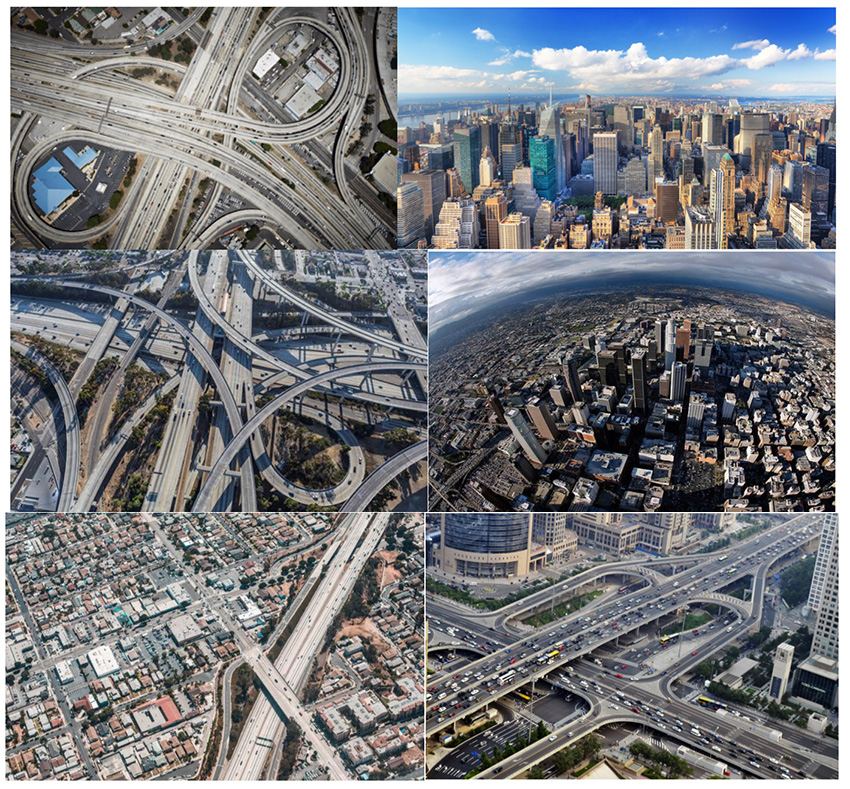As a framework, Scarcity Zero places a primary emphasis on modularity and standardization because these concepts enable flexible – and innovative –deployments of new technologies. That’s why Scarcity Zero looks to cities for large-scale renewable integration. While cities have the highest population density, and thus demand the lion’s share of both energy and resources, they also allow us to integrate renewables on a large scale as a byproduct of municipal infrastructure budgets. Deploying renewables within cities in a standardized, modular capacity affords Scarcity Zero the flexibility to serve important secondary purposes and solve future problems.
To see how, consider the following six images of civil infrastructure. Imagine, as we did last chapter, that they were completely integrated with renewables. Every window and roof of every building. Every road and off-ramp. Every bridge. Every highway median. Everything.

This scale of renewable integration within any municipality will generate tremendous energy. But that’s only a feature of the strategy; it’s not the end goal. The goal is to not only remove the net energy demand cities place on our national electric grids, but also to further turn that into net energy production, functionally transforming cities into power plants.
To see how this possible, let’s run some numbers. Miami-Dade County in South Florida spans an area of 2,431 square miles, 1,898 of which is land.[1] It assessed a net energy consumption of 132.13 billion kilowatt-hours in 2018.[2] We saw earlier how one square mile of solar panel surface can reliably generate 836.4 million kilowatt-hours per year. That means Miami-Dade County would only have to integrate renewables with 159 square miles of its infrastructure – less than 8% – to become resource independent. At 10%, the county generates more power than it consumes. At 16%, it’s a power plant. One might be forgiven for wondering what possibilities could arise should that integration reach 30%, 60%, 90% - all the more so as renewable technologies advance over time.
We see how this approach can remove the energy cities consume on external power networks and transforms cities from net energy consumers to net energy producers as a standard function of municipal operation. But from there, several key side benefits can help cities take full advantage of their next-generation infrastructure. Of them, standouts include smart grids, intermittency avoidance and centralized resource production.